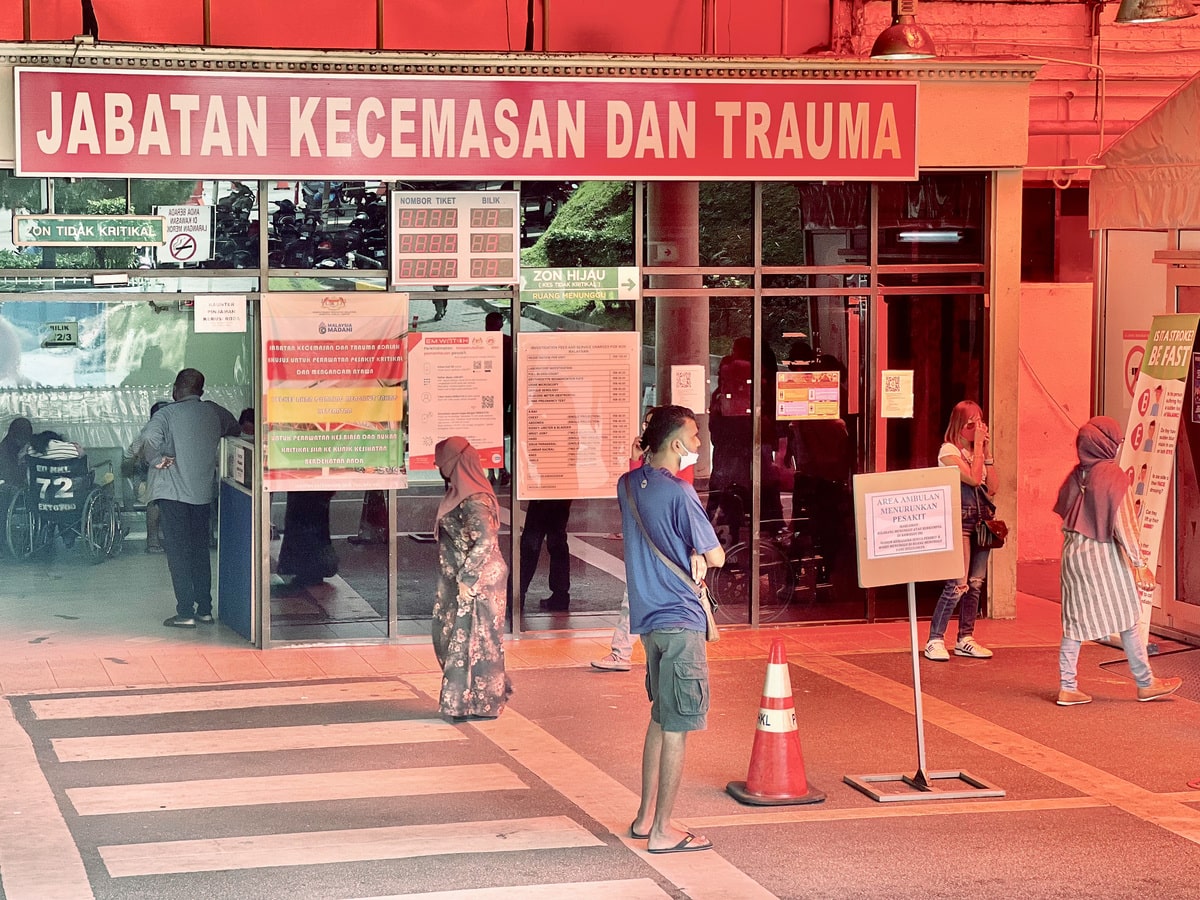While the media has extensively covered issues plaguing the medical fraternity – such as lack of staffing, lack of permanent posts, and the most recent, long waiting times in the emergency department – little has been said about the quality of the current crop of junior doctors.
The lack of proper guidelines/ SOPs for houseman training, coupled with the famously labelled snowflake/ strawberry Gen Z, means that house officers (HOs) just aren’t up to par and have become nothing more than mere clerks.
Compared to when there used to be a few bad apples, it’s now the norm to have HOs who don’t think past the spinal level. This is a worrying trend.
These HOs somehow fly below the radar to become medical officers (MOs) without the critical thinking or knowledge that’s expected of a doctor.
What is worse is when they lack the insight of their lack of knowledge, thus refusing to learn or to be taught. There then exists the conundrum of poor knowledge coupled with huge ego, also known as the unconscious incompetence in the Dunning-Kruger effect.
It is almost impossible to teach someone who refuses to even acknowledge their lack of knowledge.
This brings me back to the title of my letter.
When government hospitals and klinik kesihatan are staffed with junior doctors who lack basic knowledge or expertise, but yet refuse to consult, this will lead to them spending longer time on patients, without the ability to identify underlying issues.
Early or unnecessary discharges then occur, especially in understaffed places that lack proper check and balance. This undoubtedly leads to patients making multiple visits to get their problems properly diagnosed.
The unfortunate few would be discharged home to their deaths.
A Green Zone example in the emergency department: 10 to 30 minutes turns into one to two hours for one patient.
Malaysia’s patient load has gone back to pre-pandemic levels. What’s changed is that doctors are spending more time seeing patients, but unfortunately, the eye can’t see what the mind does not know.
A good doctor will know what to ask or when to consult if in doubt, which leads to shorter consultation, and correspondingly, shorter waiting times.
However, the current batch of junior doctors doesn’t know what to focus on, scattering bullets everywhere without a clear idea, but yet, doesn’t consult when necessary. This leads to longer consultations, and hence, longer waiting time.
What of the senior doctors? They have either left to pursue their respective specialisations or to take up administrative positions.
It is a sad, sad situation all around. Yes, the lack of future job security is one that needs to be addressed.
But the very real fact is that the doctors produced now are less and less qualified to practise medicine. This is an issue that has also been years in the making.
A doctor who cannot be taught is extremely dangerous. The worrying trend is that many of the reliable ones have quit for greener pastures.
They know their worth, but the government is not doing much to retain them.
I shall not go into how many junior doctors are also refusing to see cases, lack team spirit, kira kerja, and questioning everything except their lack of knowledge.
Feedback from friends and colleagues in other fields like law, engineering, or banking show worrying similarities.
This article will definitely ruffle feathers. But ask any senior doctor, MO, specialist, or consultant – their grouses will be similar in varying degrees.
Don’t get me wrong, there are still good doctors – but they’re just a handful and insufficient for public hospitals or clinics to function optimally in terms of patient safety.
Not all junior doctors are bad, but a significant number are. Give it a few years and it will be significant enough to cripple the system. Oh wait, that’s already happening.
I personally am tired of trying to teach, guide, or deal with this growing number of incompetent and egoistic junior doctors with poor insight.
Then again, the whole system is flawed on so many levels. The mindset in government service is to avoid rocking boats and to just punch in or out because gaji tetap jalan. It’s easier to turn a blind eye and let things slide.
But at what cost to the public?
Senior doctors and even some specialists are letting incompetent young doctors slide for our own sanity.
It’s unnecessary extra stress on top of our already heavy workload. The mental load is not worth it.
Therefore, it’s easier to turn a blind eye. Let them answer SISPAA during the mortality meeting (in some cases, there are district or hospital level meetings to discuss a patient’s cause of death).
I get told all the time, “Why do you get so angry that you need to tell them off? Let them write the surat tunjuk sebab when a patient complains or dies”.
However, my duty is to patients, so if I’m aware, I won’t let doctors simply mismanage patients.
The author is a senior medical officer with more than eight years in government service in Borneo. CodeBlue is providing the author anonymity because civil servants are prohibited from writing to the media.
- This is the personal opinion of the writer or publication and does not necessarily represent the views of CodeBlue.





